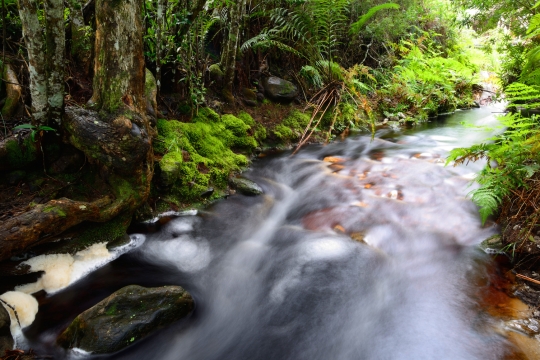CAPE TOWN, SOUTH AFRICA: Nature can help to purify the water we drink. When a forest upstream of a water treatment plant is intact and healthy, the water arriving in the plant can be of better quality than if the forest has been heavily harvested or clear-felled. Better quality water arriving in the plant, means fewer chemicals needed to clean the water, and the purification costs are therefore lower.
Is it possible, then, to work out the economic worth of the ecosystem service provided by that forest, in terms of keeping the water clean? And if so, can different countries come up with a standard way to compare how they calculate this value in each region’s unique context?
If researchers in Costa Rica, for instance, can calculate the value of water purification offered by that region’s forests, how can this be compared with the value of the same ecosystem function offered by a grassland in South Africa, or a shrubland in China?
These questions were central to a discussion by resource economists at a recent workshop in Cape Town, South Africa, which was geared towards creating the first standardised national accounting system for valuing, amongst others, the natural water purification services which healthy ecosystems offer society.
Dr Matías Piaggio, an economist with the Environment and Development Center for Central America, presented a Costa Rican case study at the Ecosystem Services Accounting for Development (ESAforD) workshop, held here this April.
This work is part of a seven-country collaboration of researchers whose objective is to draw up an ecosystem services equivalent of what ‘gross domestic product’ (GDP) is, namely the United Nations’ way of creating a global standard for countries wanting to report on their economic performance. GDP is part of the UN systems of national accounting.
The ESAforD working group, of which Piaggio is a part, is attempting to draw up this national accounting standard for three key ecosystem services: pollination services; natural systems that improve water quality; and the amenity value of green urban spaces.
‘In our Costa Rica study, we’re trying to value the water purification services of different natural land cover types, but particularly for forests,’ explains Piaggio. ‘So we are trying to see what the relationship is between land cover, natural forest, and water quality.’
So far, Piaggio has gathered month-by-month data from 15 water treatment plants around Costa Rica from 2005 to 2015. Now they are extending the study to cover a longer time period, and a greater number of water treatment plants.
‘We need to study how much water was coming into each plant over that time, the quality of that water, and the amount of chemicals needed to purify it,’ says Piaggio. ‘Then we need to look at the land cover upstream of each plant, specifically primary and secondary forests.’
They will need to consider how factors such as rainfall and temperature might also influence the water quality, but once their experiments have ‘controlled’ for that, they hope to be able to calculate the value of those forests’ water cleaning abilities.
Researchers with each of the ESAforD working group’s participating countries - South Africa, Costa Rica, China, Tanzania, Kenya, Ethiopia, and Sweden - presented their methods for similar regional research, so that they could all decide on a standardised approach to doing the research. The objective is that the four-year programme will produce results that are comparable between each country.
The workshop was hosted by the University of Cape Town’s Environmental Policy Research Unit (EPRU), and comes one year into the launch of the programme. The Swedish Environmental Protection Agency is leading the process.
